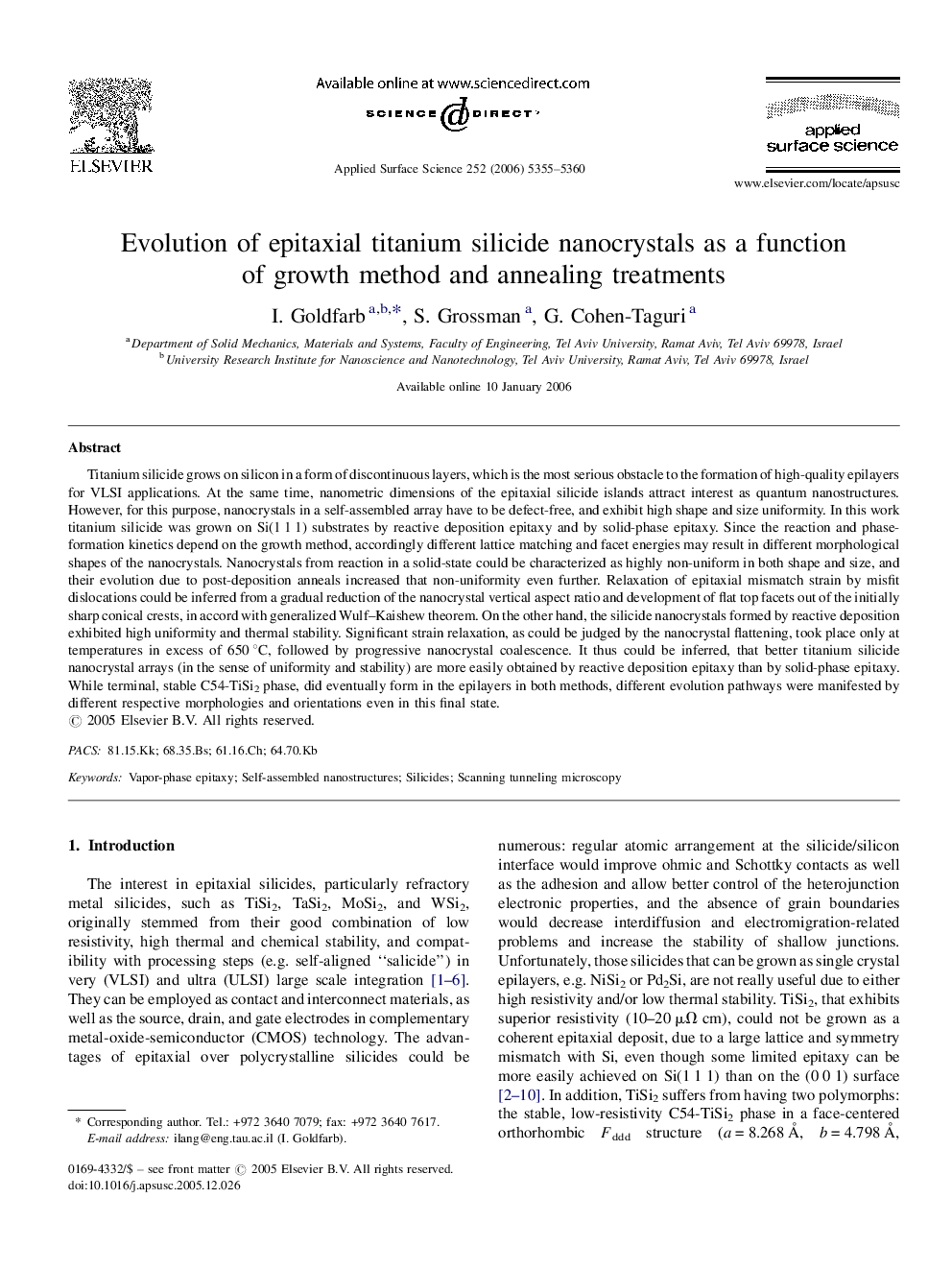| کد مقاله | کد نشریه | سال انتشار | مقاله انگلیسی | نسخه تمام متن |
|---|---|---|---|---|
| 5366310 | 1388347 | 2006 | 6 صفحه PDF | دانلود رایگان |

Titanium silicide grows on silicon in a form of discontinuous layers, which is the most serious obstacle to the formation of high-quality epilayers for VLSI applications. At the same time, nanometric dimensions of the epitaxial silicide islands attract interest as quantum nanostructures. However, for this purpose, nanocrystals in a self-assembled array have to be defect-free, and exhibit high shape and size uniformity. In this work titanium silicide was grown on Si(1 1 1) substrates by reactive deposition epitaxy and by solid-phase epitaxy. Since the reaction and phase-formation kinetics depend on the growth method, accordingly different lattice matching and facet energies may result in different morphological shapes of the nanocrystals. Nanocrystals from reaction in a solid-state could be characterized as highly non-uniform in both shape and size, and their evolution due to post-deposition anneals increased that non-uniformity even further. Relaxation of epitaxial mismatch strain by misfit dislocations could be inferred from a gradual reduction of the nanocrystal vertical aspect ratio and development of flat top facets out of the initially sharp conical crests, in accord with generalized Wulf-Kaishew theorem. On the other hand, the silicide nanocrystals formed by reactive deposition exhibited high uniformity and thermal stability. Significant strain relaxation, as could be judged by the nanocrystal flattening, took place only at temperatures in excess of 650 °C, followed by progressive nanocrystal coalescence. It thus could be inferred, that better titanium silicide nanocrystal arrays (in the sense of uniformity and stability) are more easily obtained by reactive deposition epitaxy than by solid-phase epitaxy. While terminal, stable C54-TiSi2 phase, did eventually form in the epilayers in both methods, different evolution pathways were manifested by different respective morphologies and orientations even in this final state.
Journal: Applied Surface Science - Volume 252, Issue 15, 30 May 2006, Pages 5355-5360